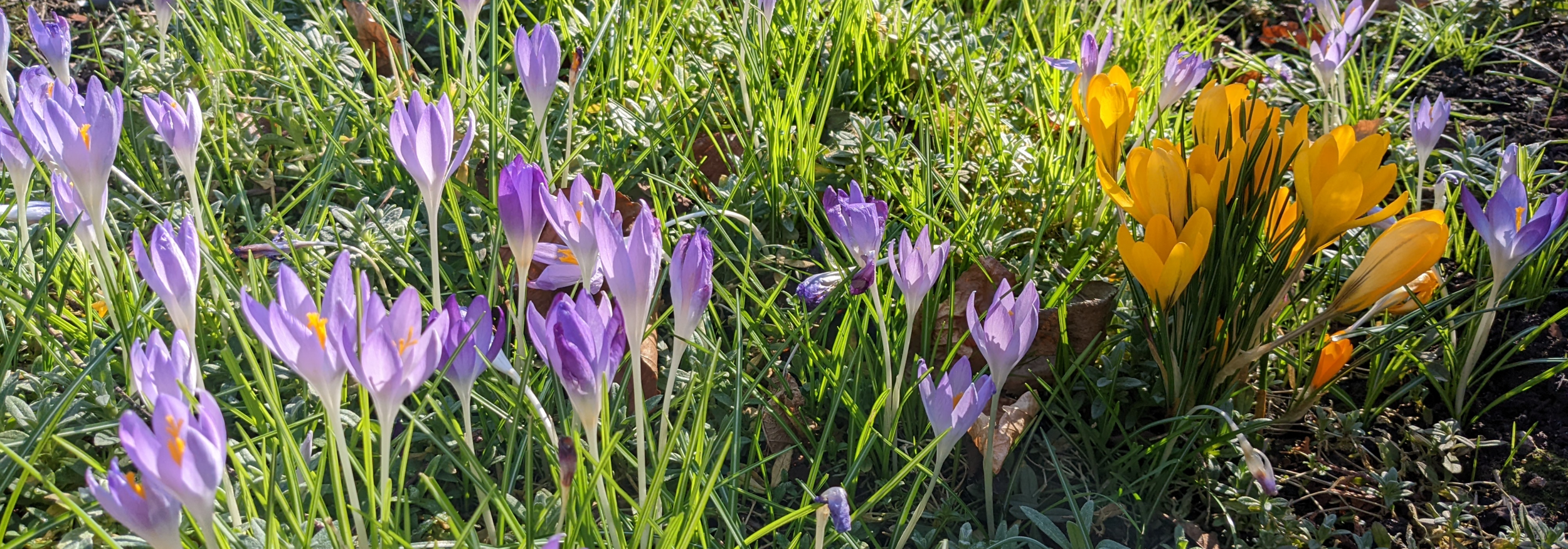Tulips
/Tulips and wallflowers
The colours, sounds and scents of spring may seem some way off as we approach the winter months, but I have always found that the task of planting spring bulbs is a reminder that warmer and longer days will arrive, eventually. One favourite – although it wasn’t always as I associated it with municipal plantings, maybe paired with wallflowers in garish colour combinations - is the tulip, available in an amazing array of colour and form; there are over 3,000 registered species and varieties. They have a fascinating history too, but aren’t always reliable year after year, which is partly why you will see so many being dug up in parks and public gardens.
Semper Augustus
Although the home of the tulip is often seen as the Netherlands, they actually originated in the high steppes of central Asia, first discovered in the Tien Shan mountains, now the border between China and Kyrgyzstan. Cultivated by the Turks around 1,000 years ago, they were prized by doctors and gardeners alike, for their medicinal and decorative uses. Suleiman the Magnificent, Sultan of the Ottoman Empire from 1520-1566, grew many tulips in his gardens and it is said that he sent the first bulbs as a gift to the Dutch Republic. This led to a remarkable moment in history, as ‘tulip mania’ hit, when speculation on tulip bulbs led to demand outpacing supply, and fortunes were won and lost. The most valuable bulbs were those that produced ‘ broken’ flowers, where bands of colour streak across a paler background, an effect caused by a mosaic virus specific to tulips and which, rather ironically reduces vigour and ensures that the bulb dies sooner than a healthy one would. In early 1737, the year that the mania reached its peak, one bulb of ‘The Viceroy’, was offered for sale for 3,000 to 4,200 florins (a skilled craftsman would earn around 300 florins/year), whilst the most pricy of all, ‘Semper Augustus’, with a rare pattern of feathered streaks, was advertised for 14,000 florins (more than a large house). There is much debate about the effect of tulip mania on the Dutch economy and how many individuals were involved, but there is no doubt that some merchants and speculators were stung rather badly when the bubble burst.
Fortunately, tulip bulb prices have fallen somewhat, and they are sold free of disease, so it is possible to fill your garden with a riot of spring colour for a reasonable outlay. Tulips are traditionally amongst the latest spring bulbs to be planted and can be put in the ground well into December. This reduces the risk of their emerging shoots being affected by tulip fire (Botrytis tulipae - which causes distorted growth and brown spots) as the fungal spores are less likely to spread in cold earth. Some people dispute that this makes any difference, but at the very least, it helps to stagger the task which can become arduous if large quantities of bubs are being planted. When planting, only use those which are firm and unblemished without any sign of rot, especially around the neck, and dig a hole three times deeper than the height of the bulb.
One thing that put me off buying loads of tulip bulbs each year was that many varieties seem to disappear after a couple of seasons, occasionally sending up a few pathetic leaves but no flowers. If you find that is the case, then there are a number of things you can try. Firstly, replicate the environment in which they evolved as far as you can. Here in Essex we can’t give them the altitude, but we can provide a well-drained spot in full sun where they can bake during the summer. Then once they finish flowering, leave the leaves to die back naturally and feed with a phosphorus rich fertiliser.
Tulipa clusiana
In the meantime, I am taking the easy way out and planting botanical, or species tulips. These are bulbs just as nature made them, the ancestors of all the varieties of tulip we can buy today. Generally reliable and long lived, if happy they will spread. There are lots to choose from, but my choice for this year are Tulipa kaufmanniana, T. fosteriana, T. greigii, T. sylvestris. T. tarda and T. clusiana.
Finally, we don’t know what will be happening next spring, but tulip petals are edible, and during the second world war and the famine of 1944-45 in Holland, the Dutch ate tulip bulbs because there was nothing else to eat. They also ground the bulbs into flour to make bread. Let’s hope we don’t come to that…
First and third images, author’s own.
Second image, Semper Augustus, times two, Brandemandus tulip book, Public domain




